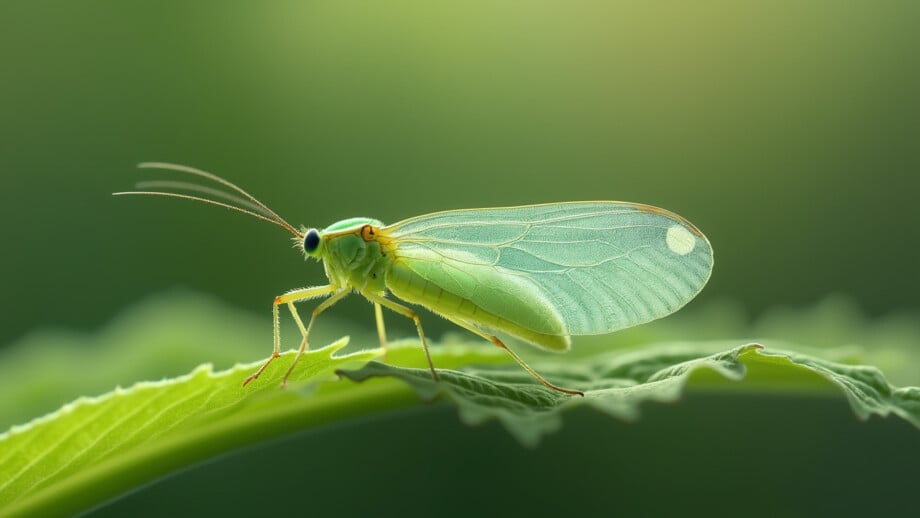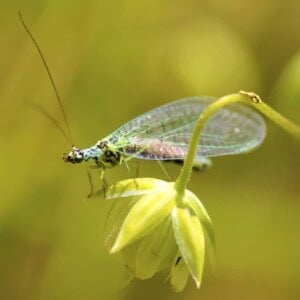Green Lacewing
A voracious predator, lacewing larvae feed on a large number of soft bodied pests, mites and insect eggs.


Green Lacewing
(Free Shipping!)
Lacewing Eggs
A voracious predator, green lacewing can consume as many as 60 aphids an hour.
Learn moreDespite its beautiful, poetic name, the green lacewing (Chrysoperla rufilabris) is deadly to almost any soft-bodied insect pest and its eggs. In its adult stage, it lives up to its name, feeding only on nectar and pollen. In its larval stage — when it’s known as the “aphid lion” or “aphid wolf” — it’s a voracious consumer of problem insects, known to devour over 200 aphids in a week. If it runs out of food, it will cannibalize other lacewing larvae.
Shop our large selection of beneficial insects, including green lacewing, at Planet Natural. One vial — 1,000 eggs — treats up to 1,200 square feet and costs $14.50 with USPS First-Class Mail shipping included!
C. rufilabris lays up to 200 eggs, often near a colony of aphids, on a slender stalk, known as the “egg stalk,” attached to the underside of a plant leaf. After hatching, the larvae climb the stalk to find their prey. The larvae continue to feed for two to three weeks, then spin cocoons from which the delicate adults emerge in five days, ready to lay more eggs.
HOW TO RELEASE:
- Release when a few tiny (1/32nd of an inch) larvae are seen moving about the container.
- Gently turn and shake the container to mix the contents.
- Spread the material evenly over the pest infested area.
- A second release, two weeks later, may be necessary.

Note: Shipped as eggs packed in a rice hull carrier, larvae soon hatch and feed for 2-3 weeks before becoming adults.
Tip: Ants feed on the honeydew that sucking insects (aphids, mealybugs, thrips) produce and will vigorously protect these pests from their natural enemies. If possible, control ants prior to release.












